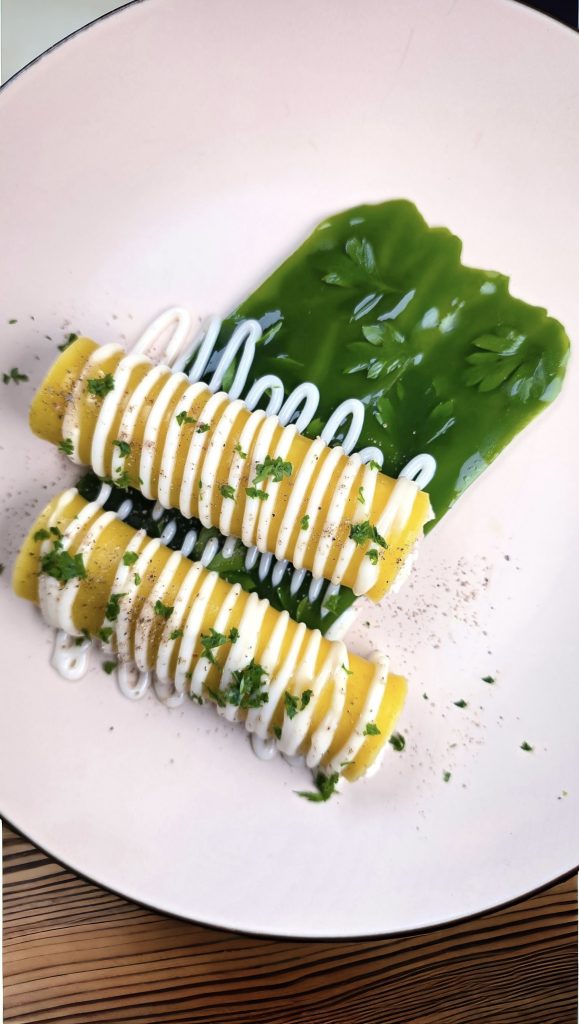Have you ever heard of Cannelloni Alfredo? This gourmet dish draws inspiration from the iconic fettuccine Alfredo, a staple of Italian-American cuisine that showcases how Italian culinary traditions have crossed the Atlantic to become a cherished part of American culture.This connection is especially significant during Italian American Heritage Month, celebrated every October, honoring the contributions of Italian immigrants and their descendants to American society, including the realm of cuisine.
The History of Fettuccine Alfredo
Contrary to popular belief, fettuccine Alfredo has no ancient origins; it is a relatively recent creation dating back to 1914. The dish was invented by Alfredo Di Lelio, a Roman restaurateur, who developed a simplified version of classic fettuccine with butter for his wife, who was recovering from childbirth. The original recipe consisted solely of fresh fettuccine, butter, and Parmigiano-Reggiano. It gained immense popularity, both with his wife and at the restaurant, but became internationally renowned thanks to two Hollywood stars: Mary Pickford and Douglas Fairbanks. While honeymooning in Rome, they sampled the fettuccine and were so impressed that they helped popularize it in the United States. It was in America that fettuccine Alfredo evolved into a richer version, incorporating cream and various local variations.
Fettuccine Alfredo and Italian American Heritage Month
Italian American Heritage Month is a time to celebrate the contributions that Italians and their descendants have made to American culture, history, and society. One of the most significant aspects of this heritage is cuisine. Many dishes we now consider part of American tradition are actually derived from Italian recipes adapted to the resources and tastes of the New World. Fettuccine Alfredo is a perfect example: in Italy, it remains a relatively simple dish known primarily in Rome, while in the United States, it has become a symbol of Italian-American comfort food.
This phenomenon reflects the Italian immigration experience, where culinary and cultural traditions were adapted and reinterpreted to meet the needs of life in the United States while maintaining a strong connection to Italian roots. During Italian American Heritage Month, many Italian Americans celebrate this fusion of cultures by cooking dishes like fettuccine Alfredo, often enriched with more substantial ingredients, such as chicken or shrimp, that reflect the abundance of American cuisine and the creativity of Italian Americans in keeping traditions alive.
Fettuccine Alfredo: A Symbol of Cultural Fusion
Fettuccine Alfredo perfectly embodies the blend of tradition and innovation. The dish has undergone a metamorphosis as it crossed cultural boundaries, adapting to American tastes while retaining its Italian essence. This mirrors the journey of many Italian Americans, who have preserved their cultural identity while contributing to and enriching the cultural fabric of the United States.
Ultimately, during Italian American Heritage Month, fettuccine Alfredo is not just a delicious pasta dish but also a symbol of Italians’ contributions to American cuisine and culture—a harmonious blend of flavors and traditions that continues to be celebrated and cherished by generations. With this recipe, I aim to honor a dish that holds a significant history of cultural fusion, presenting a rich and elaborate recipe suitable for all palates, hoping for a wider appreciation of this preparation and its story both in Italy and around the world.
Recipe Overview: Cannelloni Alfredo

Here’s what you’ll need to create this delectable dish!
Parsley Gel
- 50 g fresh parsley
- 200 ml water
- 1 teaspoon agar-agar powder
- Salt to taste
- 1 tablespoon extra virgin olive oil (optional)
Cannelloni
- 200 g flour
- 2 eggs
- A pinch of salt
Chicken Ragù
- 500 g chicken breast
- 1 onion
- 1 carrot
- 1 celery stalk
- 1 glass of white wine
- Extra virgin olive oil to taste
- Salt and pepper to taste
- 1 sprig of rosemary
Parmesan Cream
- 150 g grated parmesan cheese
- 100 ml fresh cream
- 50 g butter
- A pinch of nutmeg
- Salt to taste
Preparation Steps
1. Prepare the Parsley Gel
Wash and dry the parsley, removing the stems and keeping the leaves. Blend the parsley in a mixer with 200 ml of water and a drizzle of olive oil until a smooth, bright green mixture forms. Strain the mixture through a sieve.
In a saucepan, add the strained parsley liquid and bring it to a light boil. Add the teaspoon of agar-agar to the liquid, stirring well to dissolve it completely. Continue to cook over low heat for 2-3 minutes, stirring frequently, and add a pinch of salt to taste. Pour the mixture into a baking dish or onto a flat surface lined with parchment paper or lightly greased. Spread the parsley liquid into a thin layer and cool in the refrigerator until solidified.
2. Prepare the Pasta
Place the flour in a mound on a smooth surface, creating a well in the center. Crack the eggs into the well, add a pinch of salt, and mix with a fork, gradually incorporating the flour. Once the dough starts to come together, knead with your hands until you achieve a smooth and elastic dough. Knead for about 10 minutes, then wrap the dough in plastic wrap and let it rest for at least 30 minutes.
After resting, roll out the dough, dividing it into small portions, and use a rolling pin to create thin sheets. Cut the sheets into rectangles. Boil the pasta rectangles in salted water for 2-3 minutes, then drain and rinse under cold water to stop the cooking process. Lay them on a clean kitchen towel to dry.
3. Prepare the Chicken Ragù
Finely chop the onion, carrot, and celery. In a large skillet, heat a drizzle of olive oil and add the chopped vegetables. Sauté over medium heat until softened. Add the chicken, cut into small pieces, and brown for a few minutes. Deglaze with white wine and let it evaporate. Add the rosemary, salt, and pepper. Simmer for about 30 minutes, adding a bit of water if necessary during cooking.
4. Prepare the Parmesan Cream
In a saucepan, melt the butter over low heat, then add the cream and stir until you achieve a smooth mixture. Incorporate the grated parmesan, a pinch of nutmeg, and mix until the cheese is fully melted. Season with salt and turn off the heat. The cream should be smooth and velvety.
5. Assemble the Cannelloni
Fill the cannelloni with the chicken ragù using a teaspoon or a piping bag. Arrange the cannelloni in a baking dish, placing them side by side, and cover with the parmesan cream, spreading it evenly over the top. Bake the cannelloni for about 20-25 minutes.
Once baked, remove the cannelloni from the oven and let them rest for a few minutes before serving. Spread the parsley gel on the bottom of the plate, place the cannelloni on top, and sprinkle with parmesan, pepper, and a pinch of chopped parsley.


